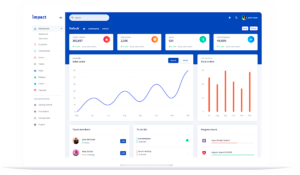Top 10 project management books
8 min read
There are many project management books in the market, but only a few that are really helpful for practitioners. We created this list of best books to help both experienced and budding project managers do their job better.
Project management is a demanding role that requires you to learn multiple skills and adapt to different people and situations. The learning never stops for a project manager who needs a combination of soft and hard skills to get the best out of a project.
With the rise of services businesses, everybody is a project manager. Whether your team is developing a software, doing marketing, managing finances or managing data, you are managing a project.
Most business owners and managers are not formally trained in project management. They learn the rope by doing or reading books on the subject. So we came up with a list of top 10 project management books, keeping in mind the different types of project managers who use HiveDesk.
Each of these books all has lessons you can apply to your daily work today.

A Guide to the Project Management Body of Knowledge (PMBOK® Guide)–Sixth Edition
Author: Project Management Institute
The PMBOK Guide, originally published in 1996, set a standard for all the upcoming project managers by providing an in-depth understanding of nine knowledge areas and 37 processes. Published by the Project Management Institute, this guide is like a bible for large organizations and people managing complex projects.
The guide helps in the standardization of the organizational projects and creating value across all departments. The guide helps the readers understand effective ways of carrying on a project and design their own path depending on what’s best for the success of their project.
The sixth edition of the PMBOK focuses more on project managers and their competencies. It also throws light on Agile and its applicability & integration into industry projects. They have also brought about a new concept of ‘Manage project knowledge’ in one section that ensures best practices are applied across all the ongoing projects of an organization.
Project Management for The Unofficial Project Manager
Author: James Wood, Kory Kogon, and Suzette Blakemore
Project Management Essentials for the Unofficial Project Manager teaches its readers the essential skill sets and mindset necessary to deliver high-quality outcomes from projects. Nowadays, employees at all levels are given roles and responsibilities of projects, even if they aren’t necessarily trained in project management. This book can be of great help for such people to get started with project management. The book familiarizes its readers with concepts like setting expectations, project accountability, stakeholder mapping, people and processes. The real-life examples help readers keep their projects organized and give inexperienced project managers tips to deal with hurdles efficiently.
Project Management Metrics, KPIs, and Dashboards: A Guide to Measuring and Monitoring Project Performance
Author: Harold Kerzner
Most businesses today make decisions based on metrics and KPIs. The quality of these decisions depends on the metrics and KPIs they take into consideration.
With constant advances in technology and the rise of complex projects with multiple stakeholders, new and effective metrics development is also evolving. Project Management Metrics, KPIs, and Dashboards: A Guide to Measuring and Monitoring Project Performance, gives managers a deep understanding of the basics of metrics and KPI development and management. Functional managers can learn the best practices in dashboard building, designing and applying them to their project’s needs. The concepts are well explained with screenshots. The illustrations of real-life successful projects are handy for managers who are just getting started with project management.
An Introduction to Project Management, Sixth Edition
Author: Kathy Schwalbe
This book goes completely hand in hand with the latest edition of PMBOK Guide, highlighting concepts of the PMI talent triangle and agile approach.
The book comprises a bunch of illustrations, the latest research, statistics, anecdotes of real-world examples, screenshots of software tools and other information. The author has curated the book with plenty of real case studies and examples, making it an enjoyable read for the readers to relate to. Also, the book keeps its readers engaged with quizzes, summaries, discussion questions and exercises to work on individually and practice.
Doing Agile Right: Transformation without Chaos
Author: Sarah Elk, Darrell K. Rigby, Steve Berez
In day-to-day business activities and projects, innovation in companies takes a back seat and only remains in the ideation stage. This has been a pain point since ages leaving employees demotivated. Larger organizations face this grunt more as it takes forever to make decisions and execute plans, making the process sluggish.
The agile project management technique is a way to revive projects and get them back on track. Bain & Company thought leader and HBR author Darrell Rigby and his colleagues Sarah Elk and Steve Berez wrote this book to instill in their readers how to do agile right.
They go beyond just the popularity of the concept and get to the ground reality. It busts the myth that the Agile concept does not magically revive projects. It’s the best practices in Agile that lead to success. They give realistic examples and with the help of illustrations affirm how Agile can pace a company’s innovation-based projects. The concepts in the book do not apply only to large companies; they apply equally well to smaller organizations and individual projects.
They have identified the pitfalls to avoid, backed by data and methodologies. The book touches upon topics like how Agile really works, planning, budgeting, people, processes, technology and crisis management with Agile.
The Fast Forward MBA in Project Management (Fast Forward MBA Series)
Eric Verzuh
This well-written guide explains the various aspects of project management. Individuals with experience in managing projects will find this guide handy, very relatable and simple without any jargons. The contents of the book are all very relevant today and answer all any question you may have.
The latest Fifth edition brings fresh case studies, Agile concepts, change management and stakeholder management – all topics that are extremely relevant in current times. This book is a complement to the PMBOK guide. Its introductory chapters familiarize readers with project management and innovation. It then progresses to explain how to plan and control ongoing projects systematically.
Making Things Happen: Mastering Project Management (Theory in Practice)
Author: Scott Berkun
Making Things Happen: Mastering Project Management is a critically acclaimed bestseller. It’s based on the experience of Scott Berkun, program manager for Internet Explorer. Berkun has also been the lead manager for Windows and MSN.
Through his book, he simplifies complex topics by giving practical and useful advice through essays. This is a must-read even for experienced project managers. The book covers topics like making things happen, making good decisions, leadership, what to do when things go wrong, etc. It encompasses all the best practices followed by Microsoft and their various project design related experiences.
Design Thinking for Program and Project Management
Author: George Anderson
Design thinking in Project Management is a very different approach to problem-solving that the author has tried to explain through this book.
Design thinking principles are entirely based on a human-centered approach at each and every step of problem-solving. It shifts focus on desirability, feasibility and viability. Complex problem solving can be done with a collaboration of individuals who are problem solvers and support from those with expertise in leadership and management.
Anderson explores several such techniques in the book and has applied the Five Step Design thinking model in his approach. He uses a different strategy to explain the concepts avoiding the trap of common techniques like empathy maps, silent design methods, edge case thinking, scaling techniques, and reverse brainstorming, testing. The concepts explained in the book can be applied to almost any business domain.
Measure What Matters
Author: John Doerr
This is an exceptionally well-written book by John Doerr that gives a deep dive into how he brought Objectives and Key Results (OKRs) to Google. According to Doerr, the OKR concept is entirely based on the four pillar concepts of focus, align, track and stretch. Each of these concepts is well explained in different chapters, with lots of case studies supporting them.
OKR has proved to be a revolutionary approach while setting goals and making choices for the business. Doerr has introduced the concept of OKR to above fifty companies and helped them surpass their expectations. It inspires the readers to focus on what key areas they should actually focus on excelling.
Project Management: A Systems Approach to Planning, Scheduling, and Controlling
Author: Harold Kerzner
As the businesses and projects become global in scope, the complexities associated with them have skyrocketed. Most projects today, even in small companies, have people from multiple cities and even countries. This requires a new approach to manage the complexities arising from people working across different time zones and languages.
The 12th edition of this book has more focus on topics like stakeholder management, causes of failure, Agile project management, project governance failure and many others. Readers learn about organizational structures and project management techniques, cost control, risk management, planning & scheduling, and QA. They learn how to work effectively with stakeholders around the globe. This book is handy at all levels of a project and is also considered by many as the project management Bible.


